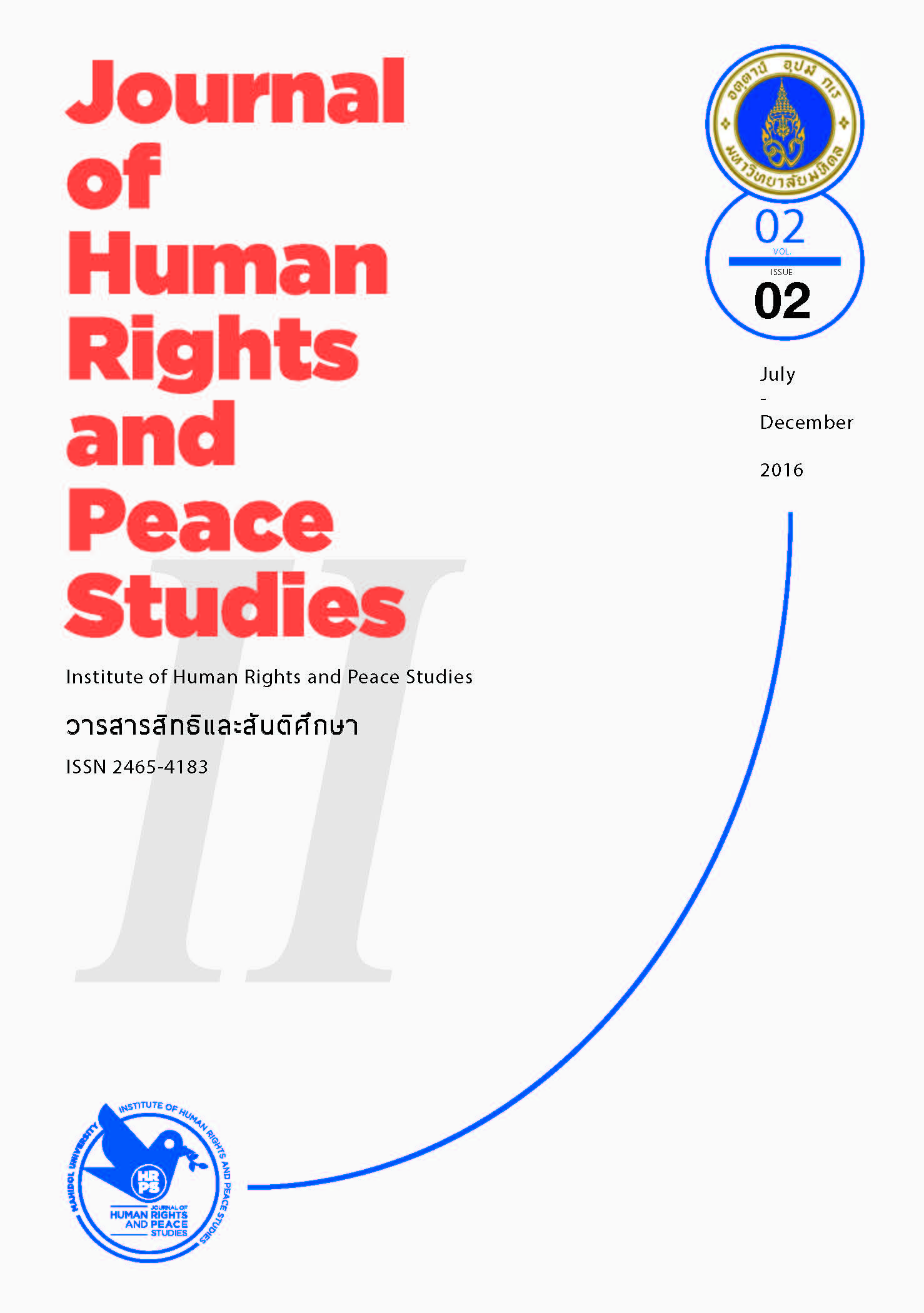Integrated Islamic Education in Southern Thailand and Northern Malaysia: Reforms and Challenges
Main Article Content
Abstract
The Muslim world is in the midst of a dilemma due to the dualism in education systems. In response several scholarly initiatives have emerged to ensure the necessary balance between the secular and religious curricula through integration. Integrated Islamic education has been implemented in southern Thailand and several states of northern Malaysia to address varied requirements of these states. This research attempts to compare the reforms and challenges faced by these two neighboring countries in implementing an integrated Islamic curriculum mainly in medium level schools. Both documentary research and semi-structured interview methods have been used to collect data. The research has identified the underlining differences in the contexts, implementation, and extent of the integrated Islamic curriculum in the two countries. It has revealed the qualitative aspects of the integration, which aim to forge a link between developing a responsive citizen and a better religious person. It has identified that Malaysia has significantly developed the policy and curricula but has come up short in developing skills for implementing such integrated Islamic education. On the other hand, curricula and skills remain a challenge for integrated Islamic education in southern Thailand. The researchers argue that the challenges of longer school hours, lack of wider student involvement, and poorer integration can be addressed through extending cooperation among various stakeholders. It is recommended that the cooperation shall not remain limited within national borders but, rather, it should explore the huge potential of cross-border cooperation.
Article Details
The views, opinions, and pictures expressed in this journal are those of the authors and do not necessarily reflect the opinions and viewpoints of the editor and the editorial board. All rights are reserved by the authors and the Institute of Human Rights and Peace Studies of Mahidol University. No part of this journal may be reproduced, stored in a retrieval system, or transmitted in any form or by any means without the prior permission in writing from the journal’s editor, or as expressly permitted by law, or under terms agreed with the appropriate reprographics rights organization. Non-commercial use of information in this journal must be properly referenced.
References
in Nigerian Islamic Universities. In IIUM Journal of
Educational Studies, 4:1 (2016): 78 - 99. Kuala Lumpur:
Malaysia.
Al-Attas, S., (2008). Preliminary Thoughts on the Nature of Know
ledge and the Definition and Aims of Education. In
Al-Attas, S., (Ed.).An Islamic Perspective on the
Commitment to Inter-Religious Dialogue. Kuala Lumpur:
International Institute of Advance Islamic Studies.
Al-Shaybaniy, O., (1991). Falsafah Pendidikan Islam. (Hasan
Langgulung, Shah Alam, Trans). Istanbul: Hizbi Press.
Amin, M., Yusof. A., and Hane, A., (2011), The Effectiveness of an
Integrated Curriculum: The Case of the International
Islamic University Malaysia, Presented at 8th Inter
national Conference on Islamic Economics and Finance
2011, Center for Islamic Economics and Finance, Qatar
Faculty of Islamic Studies, Qatar Foundation.
Atique, B., (2013). Importance of Education in the Light of Islam:
An Overview, Retrieved from www.academia.edu.
Azra, A., (2012). Reforms in Islamic Education: A Global Perspective
Seen from the Indonesian Case. London: Center of Islamic
Studies, University of Cambridge.
Hashim, R., (2007). Educational Dualism in Malaysia: Implications
for Theory and Practice. Kuala Lumpur: Oxford University
Press.
Hashim, R., (2012). “Muslim Higher Private Educational Institutes
in Malaysia: Issues and Challenges”. In Islam and
Civilizational Renewal, 474-488. Kuala Lumpur: ISIA
Malaysia.
Khan, F., (1988). The Quraanic Principles of Education.Dhaka:
Islamic Foundation Bangladesh.
Knowledge Exchange Program, (2013). Available athttp://kep.org.sa/
en/SideMenuContent_en.aspx?MenuID=97&MenuTitle=Ed
ucation%20in%20Islam#sthash.OhbpQNFb.dpuf.
Liow, C., (2009). Islamic, Education and Reform in Southern
Thailand: Tradition & Transformation. Singapore: Institute
of Southeast Asian Studies (ISEAS), Singapore.
Mursi, M., (2004). El-Tarbia el-Islamia: Usulaha wa Taturuha
fi el Bilad. Washington, D.C.: Creative Associates Inter
national, Inc.
Narongraksakhet, I., (2003). Developing Local-based Curriculum
Guidelines for Islamic Private Schools in Southern Thailand,
(Unpublished doctoral dissertation). University of
Malaya, Malaysia.
Parameswaran, P., (2011). “Utilizing Islamic Religious Education as
a Peacebuilding Tool: A Case Study of Southern Thailand”.
In Global Politics Magazine, http://www.global-politics.
co.uk/Issue%204/Thai%20schools.htm.
Priyakorn, P., (2010). The Status of Islam and Muslims in Thailand,
Presented at International Conference on Muslims in
Multicultural Societies. Organised by MUIS Academy,
Islamic Religious Council of Singapore (MUIS).
Rabbani, F., (2009). Al-Attas’ Concept of Ta‘dib as True and Compre
hensive Education in Islam - Wan Mohd Nor Wan Daud.
Seekershub. Available at www.seekershub.org.
Saleemad, K., (2012).Development of a Leadership Model for Islamic
School Leaders in Thailand. Scholar, 4(2), pp.86-88.
Salleh, M., (2010). The Philosophy and Objectives of Education in
Islam. Kuala Lumpur: International Islamic University
Malaysia (IIUM).
Shamma, F., (2005). The Status of Islamic Curriculum - An Overview.
Available at http://www.4islamicschools.org/admin_curr.htm.
Yaacob, H., & Embong, M., (2008). The Concept of An Integrated
Islamic Curriculum And Its Implications For Contem
porary Islamic Schools. The paper is presented at the
International Conference in Islamic Republic of Iran,
20-22 Feb 2008, Organized by OIC, ISESCO & The
Ministry Education of Islamic Republic Iran.
Yala Rajabhat University (2005).“Development and Directions for the
Administration of Islamic Schools in the State of Kedah”.
In the Workshop on the Improvement of the Quality of
Private Islamic Schools. 17 November 2005, Yala Rajabhat
University, Document No. 4, p. 2, 3.


